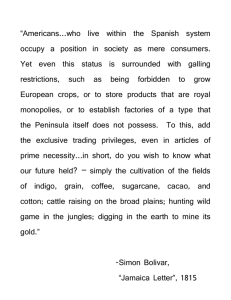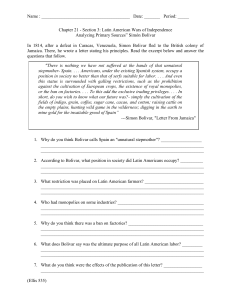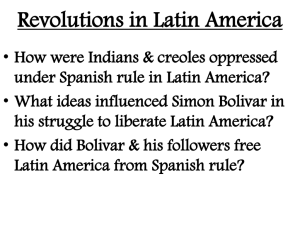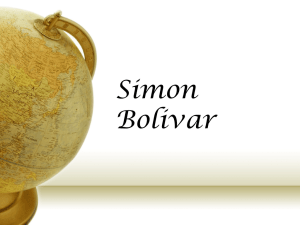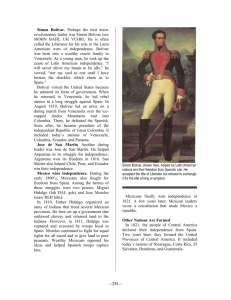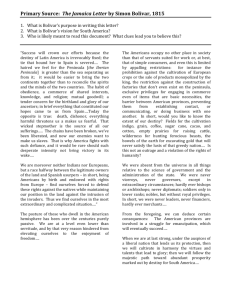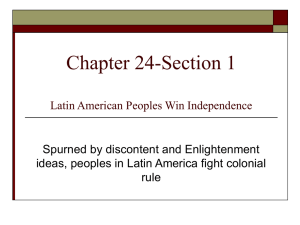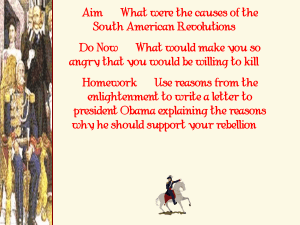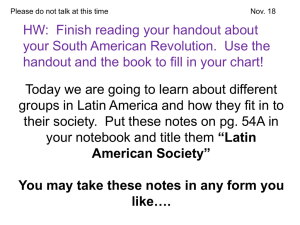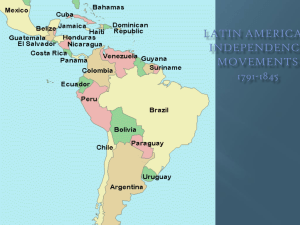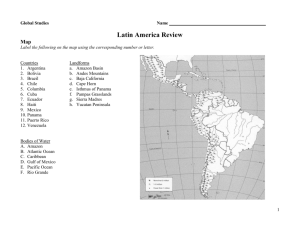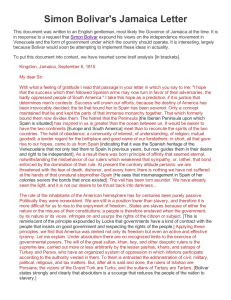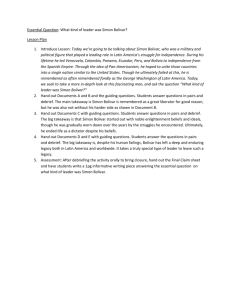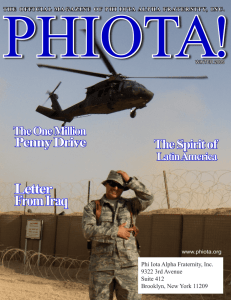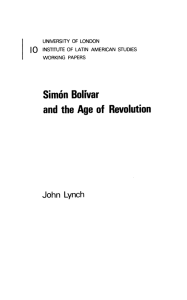here
advertisement
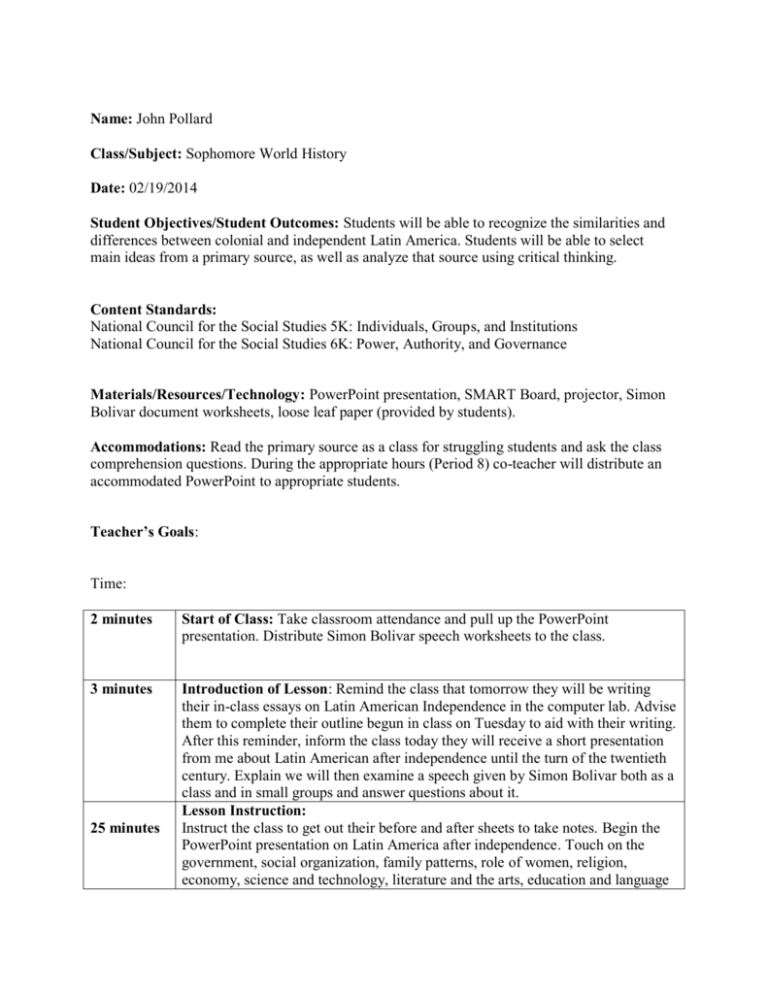
Name: John Pollard Class/Subject: Sophomore World History Date: 02/19/2014 Student Objectives/Student Outcomes: Students will be able to recognize the similarities and differences between colonial and independent Latin America. Students will be able to select main ideas from a primary source, as well as analyze that source using critical thinking. Content Standards: National Council for the Social Studies 5K: Individuals, Groups, and Institutions National Council for the Social Studies 6K: Power, Authority, and Governance Materials/Resources/Technology: PowerPoint presentation, SMART Board, projector, Simon Bolivar document worksheets, loose leaf paper (provided by students). Accommodations: Read the primary source as a class for struggling students and ask the class comprehension questions. During the appropriate hours (Period 8) co-teacher will distribute an accommodated PowerPoint to appropriate students. Teacher’s Goals: Time: 2 minutes Start of Class: Take classroom attendance and pull up the PowerPoint presentation. Distribute Simon Bolivar speech worksheets to the class. 3 minutes Introduction of Lesson: Remind the class that tomorrow they will be writing their in-class essays on Latin American Independence in the computer lab. Advise them to complete their outline begun in class on Tuesday to aid with their writing. After this reminder, inform the class today they will receive a short presentation from me about Latin American after independence until the turn of the twentieth century. Explain we will then examine a speech given by Simon Bolivar both as a class and in small groups and answer questions about it. Lesson Instruction: Instruct the class to get out their before and after sheets to take notes. Begin the PowerPoint presentation on Latin America after independence. Touch on the government, social organization, family patterns, role of women, religion, economy, science and technology, literature and the arts, education and language 25 minutes of Latin America in the wake of independence. Next instruct the students to look at the Simon Bolivar speech. Call on a student to read the first paragraph. Have a second and third student read the last two paragraphs aloud. In between each paragraph, check student comprehension with the following questions: Paragraph One: 1. What is Bolivar saying here? (The Latin American people do not know how to govern themselves because they had bad teachers in the form of the Spanish colonial government.) 2. What does pernicious mean? (Destructive.) Paragraph Two: 1. What does Bolivar say is more powerful than the rule of tyrants? (The rule of law.) 2. What is he encouraging the legislators to do? (Create a country where the law is the ultimate authority, not leaders. He wants them to teach the Americans how to have a good, just government.) 3. What does austerity mean? (Severity or strict. The laws should be good, but severe.) Paragraph Three: 1. What should the legislators not forget? (That they are laying the foundation for the new country.) 2. What does Bolivar say the legislators’ choice should be based on? (The experiences of the Venezuelan people.) 3. What does Bolivar worry the reforms will result in? (A return to slavery.) Once the document has been read, instruct the students to work in pairs to briefly answer the following questions at the bottom of the sheet: 1. According to Bolivar, the people of Latin America____(have not been well-prepared for self-government by the Spanish.) 2. Bolivar states that a government will be most effective if it____(is molded to fit the character of the nation for which it is built.) 8 minutes Call the class back together to share their answers to the above questions. Assessments/Checks for Understanding: Tell the students to take out a piece of paper and write a short response to the following two questions: 1. Would you describe Bolivar as practical or idealistic? Use examples from the speech to defend your opinion. 2. Did Bolivar’s dream for government come true in most Latin American countries? Explain your answer using this excerpt and the information from the PowerPoint. If time permits, have students share their answers before turning in the assessment. 3 minutes Closure/Wrap-Up/Review: Ask the class if they have any questions about the material. Remind the students the class is meeting in the computer lab tomorrow to type their essays. If there is time remaining, ask some students to share answers. Collect the papers from students as they leave. Self-Assessment: Reflect on the lesson and make appropriate adjustments for future lessons.
